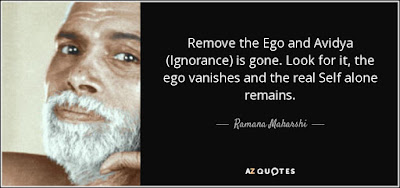The human body is a fascinating and beautiful instrument, and should be properly taken care of, however, according to traditional yoga the body is an instrument, and is not itself the goal.

This is not meant to imply some anti-body perspective. And, it is not a conflict between philosophies. Instead it should be seen as a misunderstanding of goals and tools.
Again, as has been stated before, the goal of Yoga is Yoga, period.
As a matter of fact, none of the lower levels is the goal. In authentic, traditional yoga, the student works with and trains all levels of their being, including relationships, self-exploration, senses, body, breath, and mind. However, none of these are themselves the final goal of yoga.
The aspirant following a path of authentic, traditional yoga balances their training of the following:
- Relationships: The aspirant builds relationship with the world through practices such as non-violence, truthfulness, non-stealing, remembering truth, and non-possessiveness. Building better relationships with the world is not itself the goal of traditional Yoga.
- Senses: The aspirant trains the senses so as to be able to consciously regulate them in positive ways, although working with the senses is not itself the goal of traditional Yoga.
- Body: The aspirant works with the body so as to make it flexible, strong, and steady, but working with the body is not itself the goal of authentic Yoga.
- Breath: The aspirant trains the breath so as to make it smooth, slow, and serene, but training the breath is not itself the goal of traditional Yoga.
- Mind: The aspirant deals with the mind at all of its levels, although exploring and dealing with the mind is not itself the goal of authentic Yoga.
It is important for the student to realize that the single goal of Yoga is beyond all of these, while these are to be considered obstacles or “veils” that block the realization of the Self, Truth, or Reality that is being sought. Because they are the obstacles, they are emphasized in regular practice so that they may cease to cover the eternal center of consciousness.
Swami Rama writes about the comparison of traditional Yoga and modern Yoga in his text, “Path of Fire and Light”:
"The majority of people view Yoga as a system of physical culture. Very few understand that Yoga science is complete in itself, and deals systematically with body, breath, mind, and spirit.
"When one understands that a human being is not only a physical being, but a breathing being and a thinking being too, then his research does not limit itself to the body and breath only.
"For him, gaining control over the mind and its modifications, and the feelings and emotions, become more important than practicing a few postures or breathing exercises. Meditation and contemplation alone can help the aspirant in understanding, controlling, and directing the mind."
In his opening paragraph of “Lectures on Yoga,” Swami Rama explains:
“The word Yoga is much used and much misunderstood these days, for our present age is one of faddism, and Yoga has often been reduced to the status of a fad. Many false and incomplete teachings have been propagated in its name, it has been subject to commercial exploitation, and one small aspect of Yoga is often taken to be all of Yoga. For instance, many people in the West think it is a physical and beauty cult, while others think it is a religion. All of this has obscured the real meaning of Yoga.”
In the second volume of Path of Fire and Light, Swami Rama goes even further, where he flatly declares:
"The word 'Yoga' has been vulgarized and does not mean anything now.”
So again, as an important reminder, the goal or destination of Yoga is Yoga itself, union itself, of the little (separate or egoic) self and the True Self.
Swami Sivananda Saraswati (founder of Divine Life Society of Rishikesh, India) writes of Ashtanga Yoga:
"It is said that the original propounder of classical Yoga was Hiranyagarbha Himself. It is Patanjali Maharishi who formulated this science into a definite system under the name of Ashtanga Yoga or Raja Yoga. This forms one of the Shad-Darsananas or Classical Systems of Philosophy…. Patanjali's Raja Yoga is generally termed the Ashtanga Yoga or the Yoga of Eight Limbs, through the practice of which freedom is achieved."
Many people work with diet, exercise and interpersonal relationships. This may include physical fitness classes, food or cooking seminars, or many forms of personality work, including support groups, psychotherapy, or confiding with friends. When done alone, these are not necessarily aimed towards yoga, and are therefore not yoga; however beneficial they may be.
And yet, combining work with the body, food, and relationships may very much fall under the “domain” of yoga, when yoga is ultimately the goal. The key to understanding this concept lies within that which one holds in their heart and mind, plus their degree of their conviction. Without that being directed towards the state of yoga, these methods can hardly be called yoga.
Stay tuned, this series will continue – coming up next; “Approaches to the True Goal of Yoga (Part 7).”
Rae Indigo is ERYT 500







